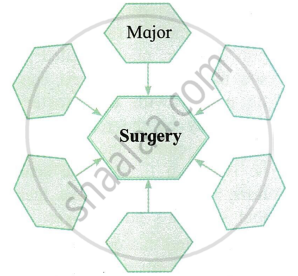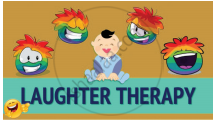Advertisements
Advertisements
Question
Read the following sentence aloud. Write who said it and to whom.
“Why, the dress you go to the theatre in !”
Solution
The above-given sentence is said by M. Loisel to Mathilde.
RELATED QUESTIONS
How did Griffin meet his end ?
Mention the way in which the sparrows expressed their sorrow when the author’s grandmother died.
Describe the changing relationship between the author and his grandmother. Did their feelings for each other change?
Can you think of a song or a poem in your language that talks of homecoming?
Guess the meaning of the following word:
Drokba
In which language are these word found?
This play, written in the 1950s, is a humorous and satirical depiction of the status of the mother in the family.
What are the issues it raises?
How does Shelley's attitude to science differ from that of Wordsworth and Keats?
What, according to Ruskin, are the limitations of the good book of the hour?
The lecture was delivered in 1864. What are the shifts in style and diction that make the language different from the way it is used today?
Make groups and discuss the following:
What inspired them to spend the best part of their lives to research and share their findings?
Imagine that you are the peasant. Compose a short prayer to God, after having received the plate of gold. Write it using stylish handwriting.
The poem expresses feelings of serenity. Pick out expressions from the above poem that express the same.
Fill in the web with words related to 'Surgery'.

Answer the following question in short.
On what condition did Tenali Raman agree to take up the challenge?
Answer the following question in short.
Explain the significance of the title.
Form pairs. Discuss and prepare a list of things that can be and will be done in future. (5 things) Spot the modal verbs in your answer.
Imagine that there is a Mr Somebody who has to correct all the wrongs that are done by Mr Nobody. Write in the following table, what Mr Somebody will have to do.
| Mr Nobody’s Actions | Tasks for Mr Somebody |
| 1. The plate is broken / cracked | Mend the plate. / Throw it away carefully. |
| 2. The book is torn | ____________ |
| 3. The door is ajar. | ____________ |
| 4. The buttons are pulled from the shirt | ____________ |
| 5. The pins are scattered. | ____________ |
| 6. The door is still squeaking. | ____________ |
| 7. There are finger marks upon the door. | ____________ |
| 8. The ink has spilled over. | ____________ |
| 9. Boots are lying around. | ____________ |
| 10. ____________ | ____________ |
| 11. ____________ | ____________ |
Add a few more things to the list in the above table, using your own ideas and experience.
What did Gopal Bhand want to tell the husband and wife?
Find out the difference between the fingerspelling method, sign language and Braille.
Identify the character or speaker.
He was the chief of all spirits.
Tom lay thinking. Presently it occurred to him that he wished he was sick; then he could stay home from school. He examined himself. He found no symptoms or sickness, and he investigated again. This time he felt he had a stomach ache, but it soon grew feeble, and presently died wholly away. He reflected further.
What did he detect?
What are the skills/values a teacher should teach their students to live in this competitive world?
Read the line and answer the question.
And all I ask is a windy day with the white clouds flying
Why does the poet ask for a windy day?
Ridleys come to lay their eggs in the month of January.
What does the tamarind give?
Find out the idiom that relates to ‘whatever the circumstances’, from the first paragraph.
Work in pair, find answer for the question and share in the class.
When is it autumn in India? Why does the poet say this? Is there an autumn season in India?
It is used in the fisher’s _____.
What day is it?
How does Raju help his mother?
Look at the picture and Choose the correct word.

Where were they going?
Are you the first to protect the nature?
Rani thought of herself as a _______ engineer.
Choose the correct one.
Rooster

What is the main idea of the story?
What was Farhan's father's advice to his son?
What should we do for success?
Now, read the following passage on “Laughter Therapy” and answer the questions that follow.

- Laughing is an excellent way to reduce stress in our lives; it can help you to cope with and survive a stressful life. Laughter provides full-scale support for your muscles and unleashes a rush of stress-busting endorphins. Since our bodies cannot distinguish between real and fake laughter, anything that makes you giggle will have a positive impact.
- Laughter Therapy aims to get people laughing, in groups and individual sessions and can help reduce stress, make people and employees happier and more committed, as well as improve their interpersonal skills. This laughter comes from the body and not the mind.
- Laughter Yoga (Hasya yoga) is a practice involving prolonged voluntary laughter. It aims to get people laughing in groups. It is practiced in the early mornings in open-parks. It has been made popular as an exercise routine developed by Indian physician Madan Kataria, who writes about the practice in his 2002 book ‘Laugh for no reason'. Laughter Yoga is based on the belief that voluntary laughter provides the same physiological as well as psychological benefits as spontaneous laughter.
- Laughter yoga session may start with gentle warm-up techniques which include stretching, chanting, clapping, eye contact and body movements to help break down inhibitions and encourage a sense of playfulness. Moreover, laughter is the best medicine. Breathing exercises are used to prepare the lungs for laughter followed by a series of laughter exercises that combine a method of acting and visualization techniques. Twenty minutes of laughter is sufficient to augment physiological development.
- A handful of small-scale scientific studies have indicated that laughter yoga has some medically beneficial effects, including cardiovascular health and mood. This therapy has proved to be good for depressed patients. This laughter therapy also plays a crucial role in social bonding.
Answer the following.
a. How does laughter help one to cope with stress?
b. Which word in the text (para 2) means the same as ‘dedicated'?
c. Why do you think voluntary laughter provides the same physiological as well as psychological benefits as spontaneous laughter?
d. ‘Laughter is the best medicine’. Explain.
e. Given below is a set of activities. Which of these are followed in the ‘Laughter Yoga’ technique?
- sitting on the ground with legs crossed
- body movements
- clapping
- closed eyes
- breathing exercises
- chanting
- stretching of arms and legs
- bending backwards
- running/jogging
- eye contact
f. ‘Laughter therapy also plays a crucial role in social bonding’. How?
